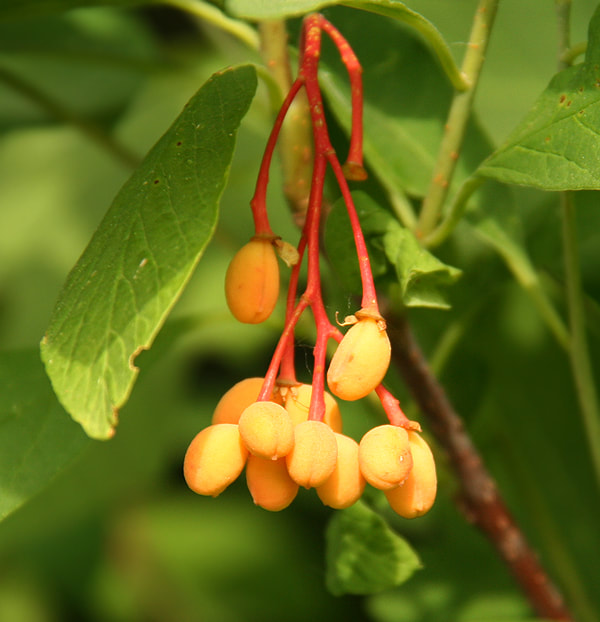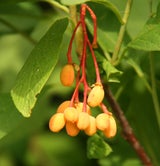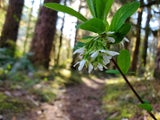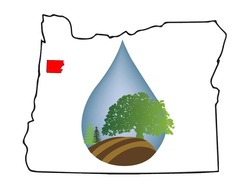- Trees and Shrubs
- >
- Osoberry
Osoberry
Oemleria cerasiformis, 1 gal.
Habit: deciduous shrub with many long, slender stems and long oval, light green leaves, and smooth margins. Bark is a dark purplish-brown color. Shrubs are either male or female (dioecious). Male flowers are more striking than the female, larger and more white. Female flowers appear greener. Fruit is in small clusters of peachy orange colored fruits that ripen to bluish black, each about the size and shape of an olive. Blooms in late winter just as the leaves are appearing, March to April. Can spread rapidly by underground suckers.
Ecology: found in the Pacific Northwest from British Columbia south to California in open areas such as roadsides, dry to moist forests and near the edges of water at elevations lower than 5500 ft (1700 m).
Growing Conditions: full sun to full shade, in moist to dry soil, with planting in a space where there is room to expand. Prefers the rich humus soils.
Fruit are edible, but bitter until perfectly ripe. The flowers attract hummingbirds, and other birds and small mammals enjoy eating the fruit as they ripen.
photo credit: Osoberry, Indian Plum - Oemleria cerasiformis, Lynette Elliott, Flickr,
Attribution-NonCommercial (CC BY-NC 2.0)
Indian plum, Marcia and Mike Nelson Pedde, Flickr, CC BY-NC-ND 2.0 DEED





